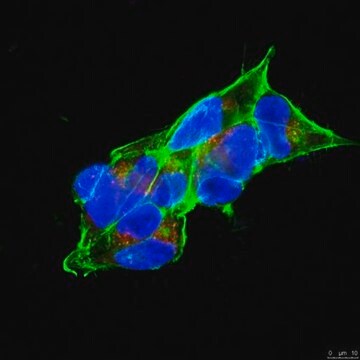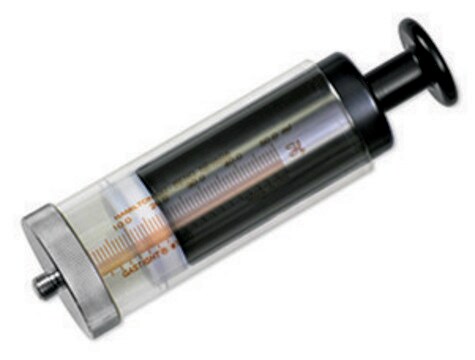MABN852
Anti-APP Antibody, clone 2B3
clone 2B3, from mouse
Sinonimo/i:
Amyloid-beta A4 protein, ABPP, APPI, Alzheimer disease amyloid protein, Amyloid precursor protein, Amyloid-beta precursor protein, Cerebral vascular amyloid peptide, CVAP, PreA4, Protease nexin-II, PN-II
About This Item
Prodotti consigliati
Origine biologica
mouse
Forma dell’anticorpo
purified immunoglobulin
Tipo di anticorpo
primary antibodies
Clone
2B3, monoclonal
Reattività contro le specie
mouse, human
Reattività contro le specie (prevista in base all’omologia)
rat (based on 100% sequence homology)
Confezionamento
antibody small pack of 25 μg
tecniche
ELISA: suitable
immunocytochemistry: suitable
inhibition assay: suitable
western blot: suitable
Isotipo
IgG1κ
N° accesso NCBI
N° accesso UniProt
modifica post-traduzionali bersaglio
unmodified
Informazioni sul gene
human ... APP(351)
Descrizione generale
Specificità
Immunogeno
Applicazioni
Inhibition Analysis: A representative lot inhibited beta amyloid production in MOG-G-UVW culture media (Thomas, R.S., et. al. (2011). FEBS J. 278(1):167-78).
Western Blotting Analysis: A representative lot detected APP in Western Blotting applications (Thomas, R.S., et. al. (2011). FEBS J. 278(1):167-78).
Immunocytochemistry Analysis: A representative lot detected APP in Immunocytochemistry applications (Thomas, R.S., et. al. (2013). Neuroreport. 24(18):1058-61).
Neuroscience
Qualità
Immunocytochemistry Analysis: A 1:100 dilution of this antibody detected APP in mouse cortical neurons.
Descrizione del bersaglio
Stato fisico
Stoccaggio e stabilità
Altre note
Esclusione di responsabilità
Not finding the right product?
Try our Motore di ricerca dei prodotti.
Certificati d'analisi (COA)
Cerca il Certificati d'analisi (COA) digitando il numero di lotto/batch corrispondente. I numeri di lotto o di batch sono stampati sull'etichetta dei prodotti dopo la parola ‘Lotto’ o ‘Batch’.
Possiedi già questo prodotto?
I documenti relativi ai prodotti acquistati recentemente sono disponibili nell’Archivio dei documenti.
Il team dei nostri ricercatori vanta grande esperienza in tutte le aree della ricerca quali Life Science, scienza dei materiali, sintesi chimica, cromatografia, discipline analitiche, ecc..
Contatta l'Assistenza Tecnica.








